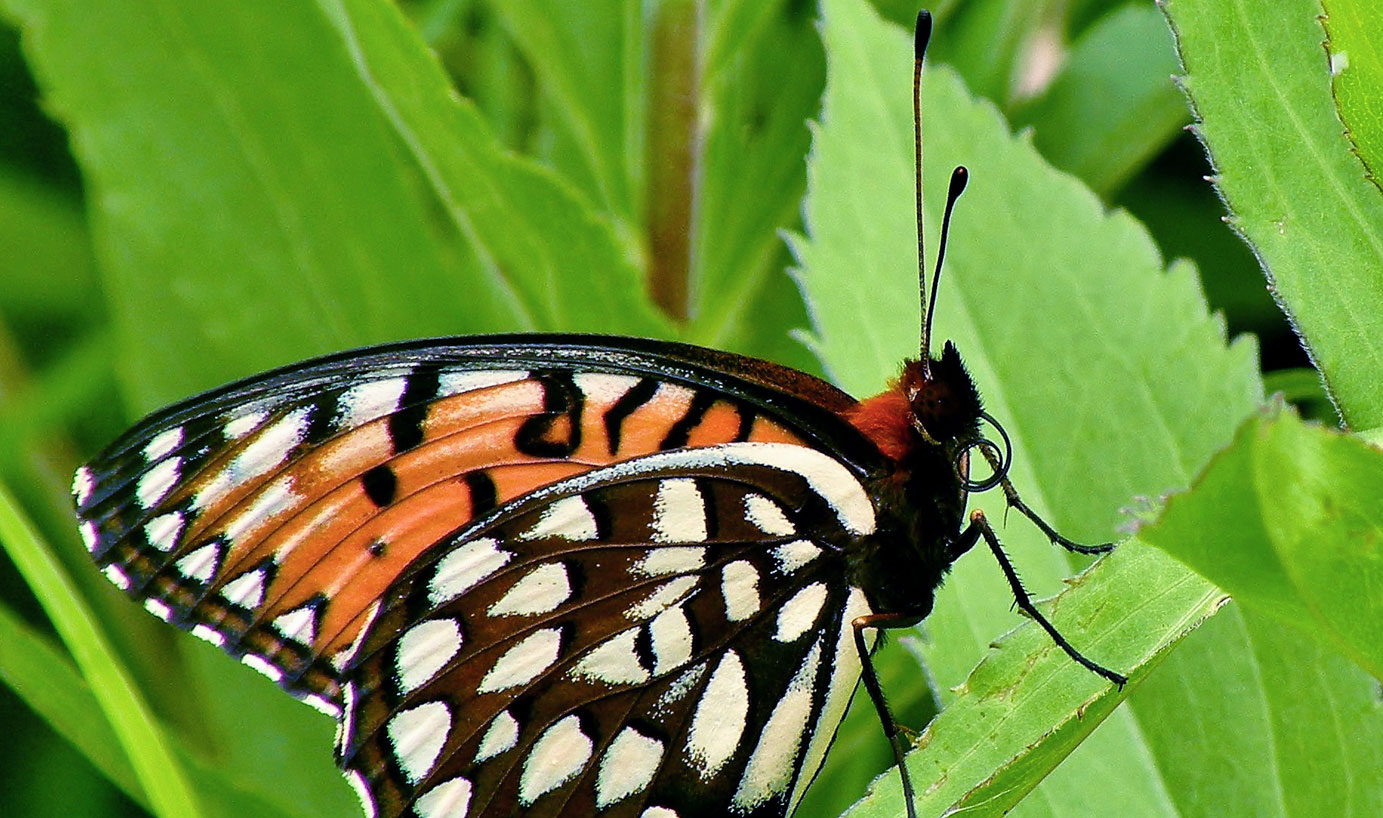| Regal Fritillary |
|

Photo: Doug TaronLucky you - you found me! I am a rare sighting. I soar across the land with two beautiful wings in search of prairie violets to lay my eggs. I go to great lengths finding a home to start my royal family, but it is becoming difficult to find my precious violets. Habitat destruction has left fewer places to call home, with many states no longer meeting the conditions to satisfy me.Please, help a queen search for her royal prize.The regal fritillary (Speyeria idalia) is identified by wings of deep orange with black designs. This butterfly produces one generation of larvae per year, which emerges with the flowers and eats only violets. The population of regal fritillaries and the population of prairie violets are directly related. When violets decline fritillaries do as well, and since prairie violets depend on native prairies, the regal fritillary has been impacted by the decline of this delicate ecosystem. DID YOU KNOW?
IF YOU COULD DO ONE THING TO HELP... Promote prairie restoration and conservation through volunteer work. The regal fritillary needs prairie violets. Females lay their eggs on these plants, and the violets are a vital food source for larvae. Restoring and conserving their habitat will support population growth for both the violets and butterflies. Learn more about prairie restoration programs. You can also donate to our regal fritillary conservation efforts.
SPECIAL THANKS Chicago Wilderness works with our lead partner, The Peggy Notebaert Nature Museum, to drive regal fritillary conservation efforts. They, in turn, coordinate with numerous other organizations across the region. The regal fritillary conservation effort is part of the Chicago Wilderness Priority Species Focus Area.
Sources: The Peggy Notebart Nature Museum, Great Plains Nature Center
|